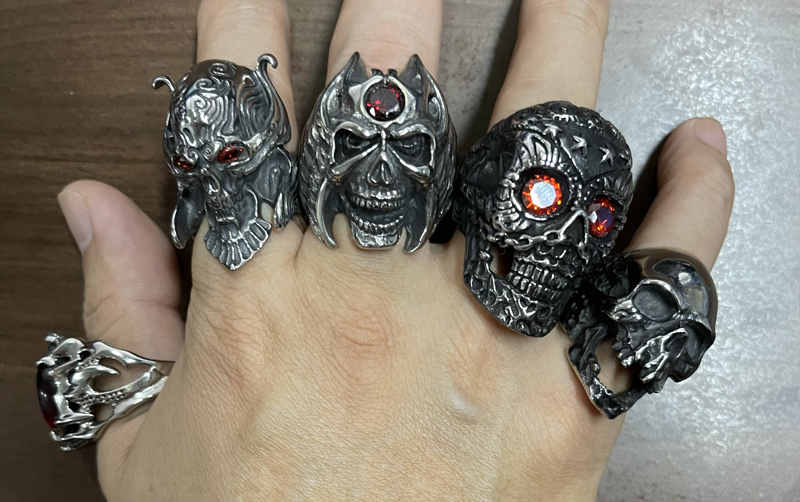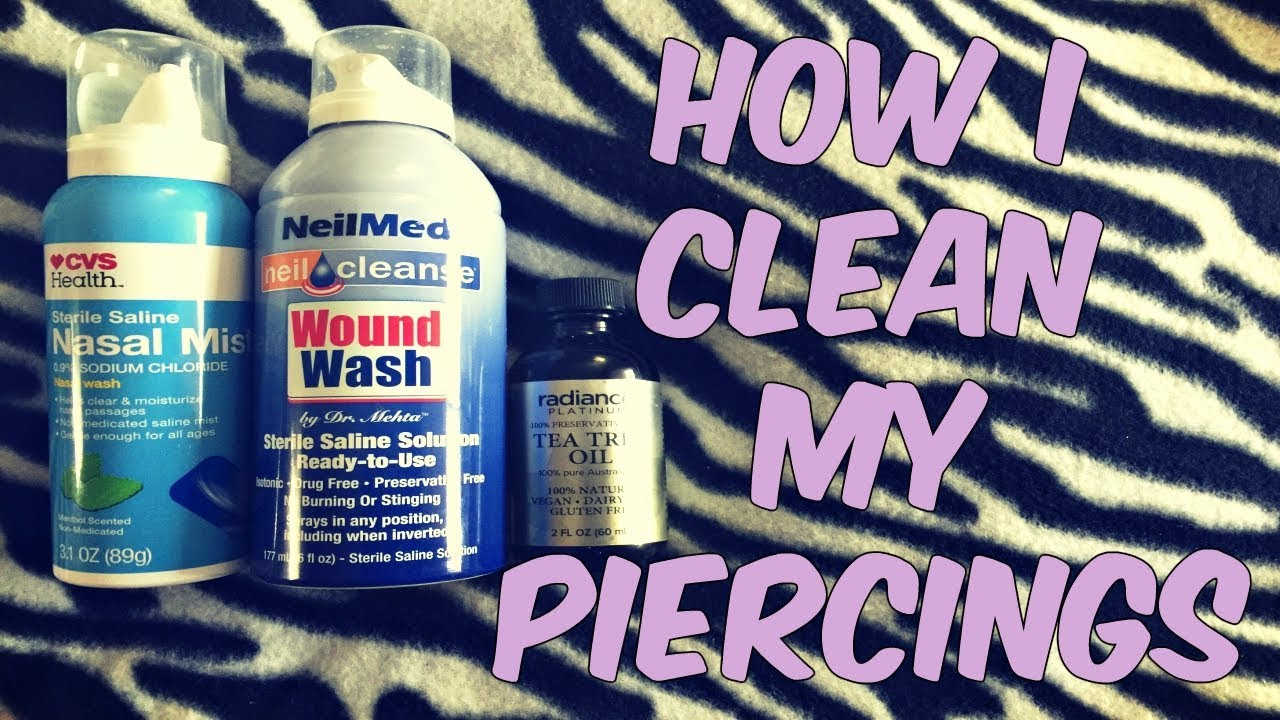Stainless steel is durable and resists corrosion and oxidation. Our jewelry will not rust, tarnish, or turn your skin green, even if worn daily. More reasons why Stainless Steel is the best. Unlike many other metals, these are safe to wear and no harm will come if you wear stainless steel for life.
But why does stainless steel tarnish, rust phenomenon?
Does Stainless Steel Jewelry Tarnish or Rust?
Whether your jewelry is made of stainless steel rust or not will depend on the type of stainless steel you are buying into, as well as the conditions you expose your jewelry to.
Stainless steel jewelry is made from 316L Steel, an alloy with high levels of chromium, iron, manganese, nickel, and carbon. Since the jewelry stainless steel is an alloy, it might tarnish with time, given the right conditions. This stainless steel 316L is the recommended version of stainless steel for jewelry because it’s hypoallergenic and safe to use as external jewelry and also as jewelry for piercings.
The other type of stainless steel is the 301L or industrial-grade stainless steel. It has the highest nickel levels, which means that this alloy can be worn externally, but it shouldn’t be used as or for body piercing. Stainless steel 304L shouldn’t be used for body jewelry either.
Does gold plated or rose cold plated stainless steel jewelry tarnish?
Even though solid gold jewelry will not tarnish, gold-plated jewelry, as elegant and classy as it looks, will tarnish with time and use. The top reason for this is that the gold-plated finish is quite fragile.
Gold-plated jewelry is jewelry that’s plated/ covered with a gold layer. Gold plating is the addition of a gold layer on jewelry. There are different plating techniques – heavy gold plating (2.5 microns of the gold layer), gold electroplating, and gold flashing/ gold washing. Though the plating thickness varies, the techniques are all referred to as electroplating. Think of the process as dipping a stainless steel piece of jewelry into a gold solution.
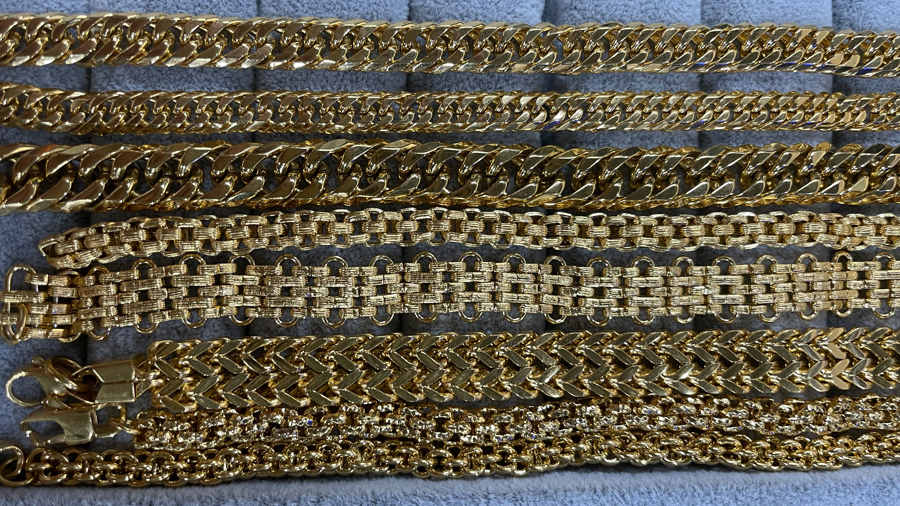
The gold layer will undergo oxidation and get tarnished fast, especially if the gold layer is too thin. And scratches on the gold layer increase the rate of tarnishing.
Why is stainless steel jewelry tarnishing/ rusting?
The truth is that just as mentioned above, nothing is indestructible. Even so, stainless steel will react to some elements of the environment over time, although the tarnishing will take a long time to manifest. At the same time, tarnishing or rusting of stainless steel depends on several other factors.
Types of stainless steel corrosion
There are six common types of corrosion of this metal. Each one of them will depend on the environment the piece was exposed to and how you maintain it. General corrosion is considered the safest form of corrosion as it is predictable, manageable, and often preventable. Localized corrosion, such as pitting and crevice corrosion, is harder to detect due to the smaller surface area affected, but can still have damaging effects. Stress corrosion cracking is also concerning as the cracks may not be detected until the application fails.
| General corrosion (or uniform corrosion) | Uniform loss of metal over the entire surface Stainless steel with a pH value of less than 1 are more prone to general corrosion |
| Galvanic corrosion (or bimetallic corrosion) | The electrochemical process where one metal corrodes preferentially compared to another in the presence of an electrolyte |
| Intergranular corrosion | Corrosion where boundaries of crystallites are more likely to corrode than inside surfaces Occurs after heating austenitic stainless steel at approximately 842–1562°F |
| Pitting corrosion | Localized corrosion resulting in cavities or holes Occurs when stainless steel is exposed to environments containing chlorides |
| Crevice corrosion | Localized corrosion at the crevice between two joining surfaces Formed between two metals or between metal and non-metal |
| Stress corrosion cracking | Growth of crack formation in the corrosive setting Tensile stresses in combination with corrosive environmental conditions lead to cracking |
Factors that can cause stainless steel to corrode
Main factors about corrosion of stainless steel jewelry
Chromium power
Though stainless steel doesn’t rust, in general, there are cases where rusting will happen. As mentioned above, stainless steel (used in jewelry) is an alloy of chromium, nickel, carbon, manganese, and iron, among other metals. While most of these metals rust, stainless steel is largely protected from rusting by chromium. Chromium protects stainless steel jewelry from rusting by preventing oxidation. For this reason, the best stainless steel jewelry has at least 10% chromium. Note, however, that the presence of chromium in stainless steel doesn’t make your jewelry 100% safe.
Though protective, the layer of chromium in stainless steel could get damaged or even worse, fail to protect the jewelry, and when this happens, the other metals in the jewelry chemically react with oxygen, hence the loss of the stainless steel/ chromium sparkle.
It’s also worth mentioning that the name stainless steel means that the metal stains less, compared to other metals.
Protective Film
Besides the protective chromium layer, the other reason why stainless steel doesn’t rust or get tarnished easily has to do with the fact that stainless steel develops an oxide layer when it gets exposed to the air. This oxide layer protects the metal from corrosion. The interesting bit is that the oxide layer/ film will also develop after the metal is damaged or if it’s nicked.
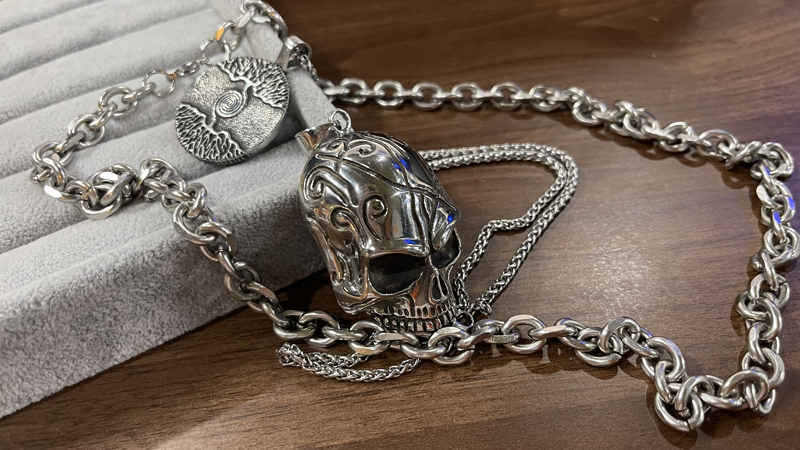
Note, however, that the environment you expose your 316L stainless steel jewelry matters as well. Even with the protective film, exposure to harsh environmental conditions will affect the metal, causing tarnishing. Therefore, you shouldn’t expose your stainless steel ring or bracelet to seawater because it will react. You could, however, shower with your stainless steel jewelry on.
Often, the jewelry will scratch and then get tarnished.
Main factors about corrosion of industrial stainless steel
- Strong Chlorides Can Cause Pitting Corrosion in Stainless Steel
Many types of stainless steel alloys will suffer extreme pitting corrosion when exposed to environments that are rich in chlorides (such as salt). For example, grade 304 stainless steel, when used in naval applications, may start to suffer pitting as a result of contact with seawater (which is rich in salt) or salt-enriched sea breezes.
To avoid pitting corrosion, it’s important to use a grade of stainless steel that is specifically resistant to chlorides—such as grade 316 stainless steel. Alternatively, a specialized coating can be applied to the steel to prevent direct contact with chlorides in the environment.
- Bimetallic/Galvanic Corrosion from Welding Dissimilar Stainless Steel Alloys
One basic mistake that some manufacturers may make when creating a custom steel wire or sheet metal form is that they may weld two dissimilar metals together—whether by accident or by design.
Why is this a problem? Because, when two metals with different properties are connected via a common electrolytic material (such as water or weld filler material), there may be a flow of electrical current from one material to the other. This will cause the less “noble” metal (meaning the metal that more readily accepts new electrons) to become an “anode” and start to corrode more quickly.
The speed of this corrosion will change depending on a few factors, such as the specific types of stainless steel being joined, what kind of welding filler was used, ambient temperature and humidity, and the total surface area of the metals that are in contact with one another. The best preventative measure for bimetallic corrosion is to avoid joining two dissimilar metals permanently in the first place. A close second is to add a coating to the metals to seal them off with a coating to prevent the flow of electrons from the cathode to the anode.
It should also be noted that using a weld filler that is too dissimilar to the metals being joined can also result in galvanic corrosion at the weld site.
- Transplanting of Plain Iron or Steel onto Stainless Steels
In some applications, particulate residue from a plain steel or iron workpiece may be transferred onto the surface of a stainless steel part or basket. These plain iron or steel particles can disrupt the protective oxide layer of a stainless steel workpiece—ruining its corrosion resistance so that it starts to rust.
The difference between this and the bimetallic corrosion problem listed above is that in this case, the contact between the dissimilar metals is purely accidental and typically without the manufacturer’s knowledge.
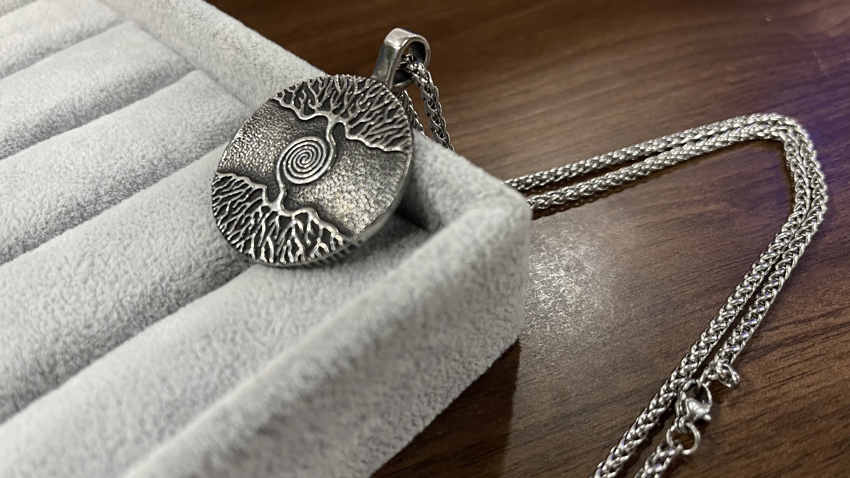
A common reason why plain steel or iron residue gets transplanted onto a stainless steel part or workpiece is that equipment used to process one type of material may be used for the other without being properly cleaned between batches. For example, say a wire bending robot was used to bend plain iron wires for several hours, then immediately used to bend stainless steel wires. Some iron particles would likely be left behind on the bending robot’s manipulators, which could then be transferred to the stainless steel wires being bent.
To prevent the transplanting of plain steel or iron (or any other metals) to stainless steel workpieces, it’s important to thoroughly clean and prepares equipment when changing over to new material. Some equipment, such as steel brushes, should never be shared between different metal types.
- Applying Temperature Extremes to Stainless Steel
Stainless steel alloys typically have a very high melting point (typically well in excess of 1,200˚F). However, while the metal doesn’t melt at high temperatures, it may experience other changes that affect its ability to resist corrosion.
For example, scaling is a common problem with stainless steel alloys when they’re exposed to extreme temperatures (such as those used in many heat treatment/annealing processes). When scales form on hot metal, the flaky leftover material can cause bimetallic corrosion since the scales have a different composition from the base metal.
Additionally, temperature extremes can cause exposed stainless steel alloys to lose their protective oxide layer for a time, increasing the risk of corrosion until the oxide layer can re-form. To prevent corrosion from scaling or other issues caused by temperature extremes, it’s important to check the recommended operating temperatures for any given stainless steel to see if the temperatures used in your manufacturing processes exceed those limits. This is part of the reason why Marlin’s engineering team always asks clients about their process’s temperatures prior to designing any custom wire basket or sheet metal form.
- Unaccounted-for Environmental Factors
There are many cases where a manufacturer can make a custom stainless steel wire basket or tray perfectly to specification, only for it to corrode because of some previously unaccounted-for environmental factor. The presence of salt and moisture in the air because of a factory’s coastal location is one example of an environmental factor that might be missed in a design document.
When selecting stainless steel to use for making any custom wire or sheet metal form, it’s important to consider as many environmental factors as possible. This helps to ensure that the stainless steel basket, tray, or part will resist corrosion for as long as possible, rather than rusting right away.
Is stainless steel jewelry waterproof?
It is waterproof but not exactly waterproof if you know what I mean.
Before we get into the details, the bottom line is that accessories, whether stainless steel or diamonds, should not be exposed to water for extended periods. And the stainless steel metal is never affected by tap water. But that doesn’t mean all water sources will not change it.
In a nutshell, we are saying this stainless steel is very durable and perfect-looking. That doesn’t mean you should expose it to absurd conditions expecting it to be as good as new.
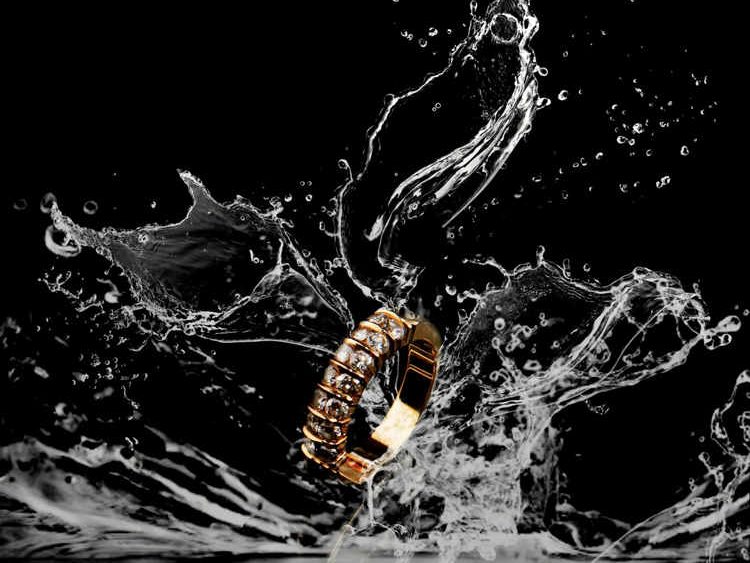
Can you shower with stainless steel jewelry?
This is one of the most often asked questions. And the answer is yes. Stainless steel shower resistance is very high and you can easily wear it while showering. What is more jewelry metals that don’t tarnish under shower water also include gold, platinum, silver, etc. However, stainless steel is not only resistant to shower water; it can also withstand rain and many other liquids. So if you accidentally get it wet, all you have to do is dry it thoroughly.
On the other hand, if you’re planning to go to the swimming pool this summer, think twice before you wear your jewelry. Pool water is highly chlorinated and it may be harsh on your stainless steel jewelry. So, before you jump into the pool, remove your jewels and avoid causing a reaction and tarnishing them.
Can you wear stainless steel jewelry in the pool?
Water, by itself, is not what causes tarnishing in your jewelry, but it is the chemicals found in the water. Chlorine found in pools and hot tubs can accelerate the rate of tarnishing.
Can you swim in the ocean with stainless steel jewelry?
It is strongly advised that you remove any types of jewelry before swimming in the ocean.
The salt content in seawater is very damaging to jewelry. Think about this, even trace amounts of water in the air will cause tarnishing to occur.
You may want to rethink storing your jewelry on a stand unprotected in your bathroom besides the sink.
Ten articles before and after
Does Zinc Alloy Jewelry Turn Your Skin Green?
How To Clean Stainless Steel Jewelry?
How To Clean Zinc Alloy Jewelry?
Is Stainless Steel Hypoallergenic?
STERLING SILVER VS STAINLESS STEEL WHICH ONE SHOULD I BUY
GOLD PLATING STAINLESS STEEL JEWELRY PROCESS
50 Best Stainless Steel Jewelry Wholesale Suppliers And Websites
